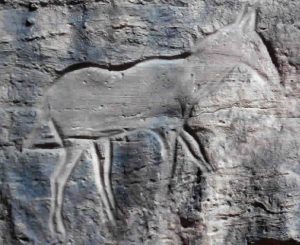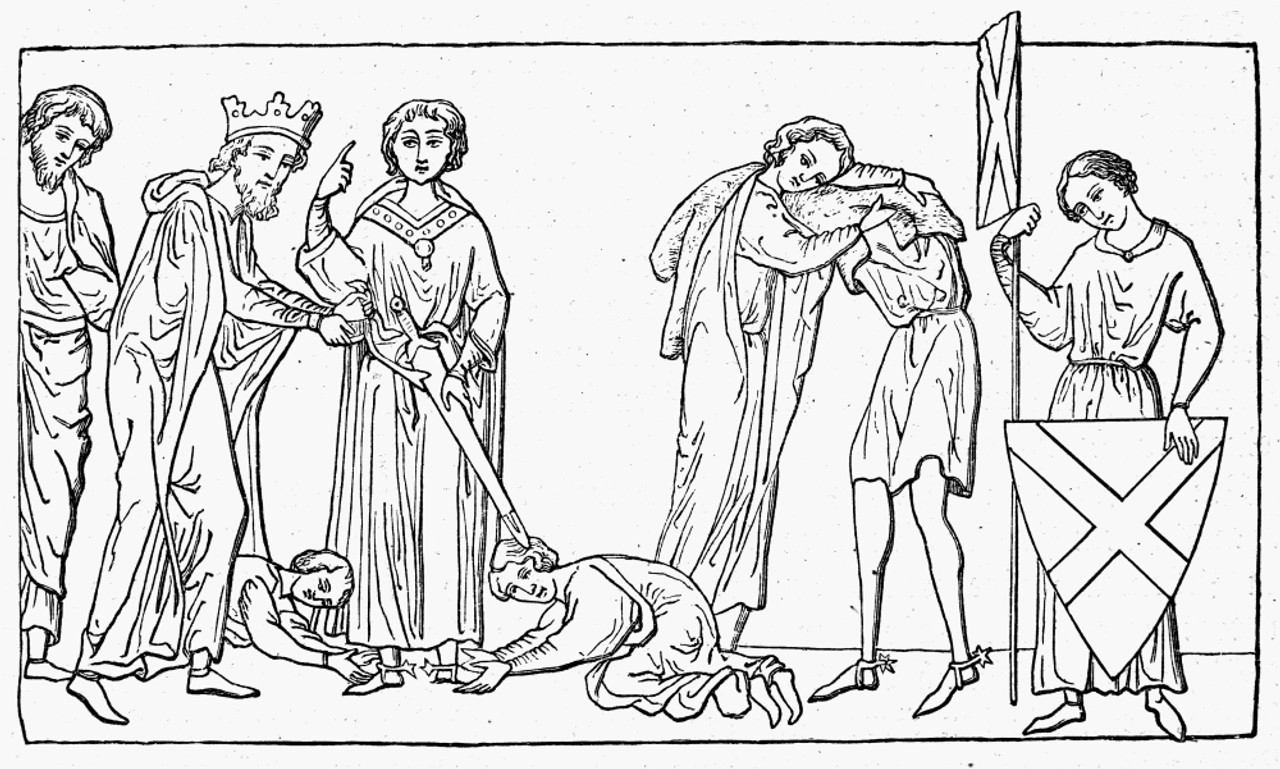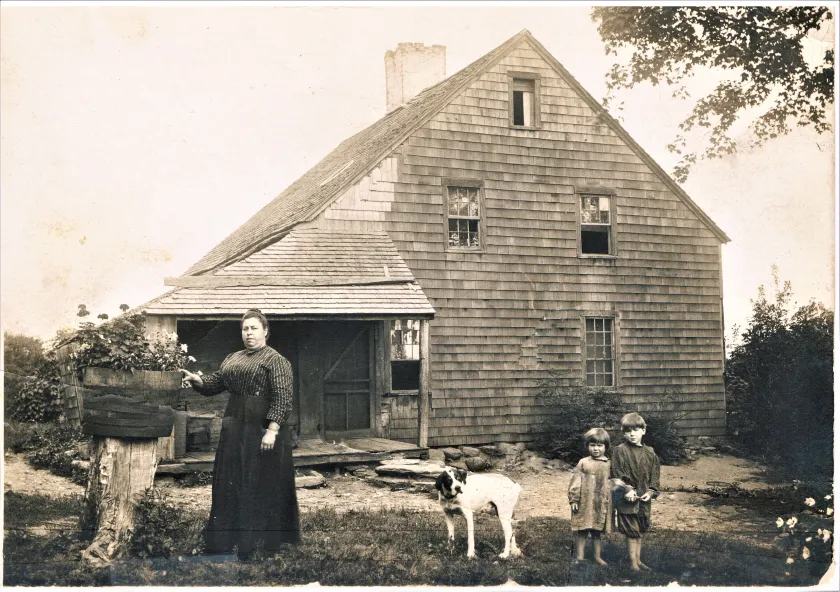Engravings, one of the oldest known forms of artistic expression, have played a vital role in human history, serving not only as a medium for creativity but also as a tool for communication and documentation. From the earliest carvings on cave walls and stones to the intricate designs found on metal and wood in ancient civilizations, engravings have been a profound way for humans to leave their mark on the world. These engravings often depicted important cultural, religious, and societal messages, creating a lasting legacy for future generations.
Throughout history, engravings have bridged the gap between art and communication. In a time when written language was still developing, these images conveyed complex stories and ideas across cultures and regions. Whether adorning the walls of ancient temples or printed in Renaissance books, engravings became essential in spreading knowledge and preserving cultural heritage.
The purpose of this article is to trace the fascinating history of engravings from their humble beginnings in prehistoric times to their development into an art form celebrated during the Renaissance and beyond. By exploring various techniques and the evolution of materials, this article will shed light on how engravings have continued to shape artistic and communication practices throughout history, right up to the innovations seen in modern engraving today.

Origins of Engraving
Prehistoric Engravings

The earliest examples of engraving can be traced back to prehistoric times, when early humans began carving images and symbols onto cave walls and stones. These carvings, known as petroglyphs, represent one of the most ancient forms of artistic expression. Found in various locations around the world, petroglyphs often depict animals, hunting scenes, human figures, and abstract shapes. They are believed to have served multiple purposes, from marking territory to recording significant events.
More than just art, these prehistoric engravings held deep cultural and spiritual meaning. Many scholars believe that these carvings were integral to storytelling, acting as visual narratives passed down through generations. They may have been used in rituals, perhaps to invoke successful hunts or to connect with the spiritual realm. In some cases, these engravings are thought to be early forms of communication, encoding information that transcended language barriers.
Ancient Civilizations

As human societies grew more advanced, engraving developed into a refined art form in ancient civilizations such as Egypt, Mesopotamia, and China. These cultures utilized engraving not only for artistic purposes but also for practical and ceremonial functions.
In ancient Egypt, engraving was crucial for creating the hieroglyphics that adorned tombs, temples, and monuments. These engravings served both religious and political purposes, documenting the deeds of pharaohs, honoring gods, and ensuring the safe passage of the deceased into the afterlife. The Egyptians used stone, particularly limestone and granite, as the primary medium for their engravings. Seals and amulets, which were often engraved with protective symbols or deities, were also common in Egyptian culture.
In Mesopotamia, engraving played an essential role in administrative and commercial activities. Cylinder seals, small cylindrical objects made of stone or metal, were intricately engraved with images and texts. These seals were rolled over wet clay to imprint designs, serving as signatures or to authenticate documents. Engraved seals also held religious significance, often depicting gods and mythological scenes. Metalwork was also common in Mesopotamian engravings, especially on ceremonial weapons and jewelry.
In ancient China, engravings appeared on various materials, including jade, bronze, and stone. Jade carvings, which were revered for their beauty and symbolic value, often featured intricate designs and inscriptions. Bronze vessels used in religious rituals were engraved with elaborate patterns and text, recording historical events and honoring ancestors. Chinese engravings were not limited to decorative objects but also appeared on oracle bones and stone stelae, which recorded important political and cultural information.
Engraving was also widely used in ancient Greece and Rome, particularly in the creation of coins. Engraved designs on coins often depicted rulers, gods, or important symbols, serving both an artistic and political function. These coins were a means of disseminating the image and authority of rulers throughout their empires, while also being used in everyday transactions. The materials used for engraving in these civilizations varied, including stone, metal, and wood, depending on the purpose and medium of the artwork.
Overall, the use of engraving in ancient civilizations was a versatile and integral part of cultural, religious, and political life. From storytelling and ritualistic uses in prehistoric times to the detailed documentation and artistic expression in ancient cultures, engraving became an enduring medium of human communication and creativity.
Medieval and Renaissance Period

Medieval Europe
During the medieval period, engravings began to take on a more prominent role, especially in religious and manuscript art. In Medieval Europe, engravings were primarily used to enhance manuscripts, decorate religious icons, and communicate religious stories to a largely illiterate population. Monasteries and religious institutions often employed artisans to engrave intricate designs onto metal plates, which were then used to decorate book covers, reliquaries, and other sacred objects. These engravings often depicted scenes from the Bible, saints, or intricate patterns symbolizing religious themes.
One of the most significant applications of engraving during this time was in woodcut engravings, particularly for religious texts. Woodcuts, a form of relief printing, allowed images and text to be reproduced in large quantities. Artisans would carve the negative space into wood blocks, leaving raised areas that were inked and pressed onto parchment or paper. Woodcut engravings were commonly used in the production of religious manuscripts, illustrations for Bibles, and devotional prints. These prints became widely circulated, helping to spread Christian teachings across Europe.
Renaissance Era
The Renaissance marked a turning point for engraving, as it rose to prominence as an independent art form, largely due to the cultural revival of classical ideals and innovations in artistic techniques. The period saw an explosion of creativity and technical mastery in engraving, particularly with the advent of copperplate engraving.
Copperplate engraving, a more precise method than woodcut, involved incising designs onto a copper plate using a burin or stylus. This technique allowed for finer details and greater artistic control. Unlike woodcuts, where the image was carved in relief, copperplate engravings were created by cutting into the surface, leaving grooves that would hold ink. The plate was then pressed onto paper to create the final print.
Two of the most famous engravers of the Renaissance were Albrecht Dürer and Martin Schongauer. Dürer, a German master, revolutionized engraving with his technical skill and ability to depict complex scenes with lifelike detail. His famous works, such as “Melencolia I” and “Knight, Death, and the Devil,” displayed his mastery of perspective, shading, and symbolism. Dürer’s engravings were not just religious or decorative; they explored human emotion, intellectual ideas, and mythological themes, solidifying engraving as a serious art form.
Martin Schongauer, an earlier engraver, also made significant contributions, particularly through his religious engravings. His work set the stage for later Renaissance artists by demonstrating the expressive power of engraving. Schongauer’s delicate and detailed lines influenced generations of artists, including Dürer, who studied his work.
The printing revolution of the 15th century, fueled by the invention of the printing press, greatly expanded the role of engravings in society. Printed materials, including books, pamphlets, and illustrations, could now be reproduced on a large scale. Engravings became a central feature in the spread of printed works, such as illustrated Bibles, scientific texts, and maps. These printed engravings helped disseminate knowledge, religious ideas, and artistic trends throughout Europe, making art and information more accessible to a wider audience.
The innovations in copperplate engraving during the Renaissance not only elevated the status of engravers but also played a crucial role in the evolution of printing as a major force in communication. The combination of artistic skill and technical innovation during this period paved the way for engraving to flourish as a vital medium of both art and information dissemination.
Engraving in the 18th and 19th Centuries
The Golden Age of Engraving
The 18th and 19th centuries are often regarded as the Golden Age of Engraving, a period marked by the widespread use of engravings in various fields, from art and literature to science and cartography. Engravings gained immense popularity during this era, becoming a preferred method for illustrating books, creating maps, and producing decorative prints.
One of the key areas where engraving flourished was book illustration. Engraved illustrations added visual richness to literary works, enhancing the reading experience. Whether in scientific treatises, novels, or historical texts, engravings provided detailed and elegant imagery that helped readers visualize the content. These illustrations ranged from delicate botanical drawings to intricate scenes from novels, making books not only sources of information but also works of art.
Engravings also played a crucial role in scientific illustration, especially in fields such as biology, anatomy, and geology. Scientists relied on engravings to depict the intricate details of plants, animals, and human anatomy with precision. Famous naturalists like John James Audubon used engravings to publish detailed illustrations of birds and animals in their natural habitats. These scientific engravings were critical for the dissemination of knowledge, as they allowed accurate reproduction of complex images in printed works.
Beyond books and scientific publications, engravings had a significant influence on the decorative arts and architecture of the period. Architectural plans and decorative patterns for furniture, wallpaper, and textiles were often engraved and circulated among craftsmen and designers. Engraved patterns allowed for the reproduction of intricate designs, contributing to the rise of neoclassical, baroque, and rococo styles in architecture and interior design. Engravings also adorned everyday objects such as ceramics, silverware, and jewelry, showcasing their versatility and appeal across various art forms.
Industrial Revolution Impact
The Industrial Revolution in the late 18th and 19th centuries brought profound changes to engraving, especially in terms of production techniques and applications. As mechanization spread, engravings were no longer handcrafted one by one; instead, they could be mass-produced, making engraved prints, illustrations, and other objects more widely available.
One of the key developments during this period was the use of mechanized engraving techniques, such as machine-driven engraving tools and steam-powered printing presses. This innovation allowed engravings to be produced at a much faster rate and with greater precision. The mechanization of the printing process made it possible to produce large quantities of books, magazines, and newspapers that featured engraved illustrations. The mass production of engravings not only lowered costs but also made art and information more accessible to the growing middle class.
Engravings also found new practical applications in the growing bureaucratic and financial systems of the industrialized world. One of the most significant uses of engraving during the Industrial Revolution was the creation of banknotes, stamps, and official documents. The ability to engrave intricate designs made it ideal for producing secure currency, as engraved details were difficult to replicate, reducing the risk of counterfeiting. Banknotes and postage stamps from this period often featured finely engraved portraits, emblems, and security features, adding both beauty and functionality to these everyday items.
The use of engravings for official documents extended beyond banknotes and stamps. Engraved seals, certificates, and bonds were produced to verify authenticity and secure transactions in an increasingly complex and industrialized society. The precision and durability of engravings made them a trusted method for creating secure, standardized documents.
The advancements of the Industrial Revolution transformed engraving from a highly skilled, artisanal craft into a widely used industrial process, making it an essential part of the communication, financial, and artistic landscapes of the 18th and 19th centuries. While the mechanization of engraving brought challenges to traditional craftsmanship, it also expanded the medium’s reach and utility, ensuring that engravings remained a central part of everyday life.
Modern and Contemporary Engravings
20th Century to Present
The 20th century witnessed a significant shift in the world of engraving, particularly with the advent of photography and digital printing, which gradually replaced many traditional engraving methods. These new technologies offered faster and more cost-effective ways to produce images and text, leading to a decline in the use of traditional hand engraving techniques. Photography, with its ability to capture images directly, became the preferred medium for reproducing visual content, while digital printing allowed for high-speed production of images with minimal human intervention.
Despite this decline, engraving has not disappeared. Instead, it has evolved with the times, adapting to modern technologies. Laser engraving, for example, emerged as a highly precise and versatile technique. Using laser beams to engrave materials such as metal, glass, wood, and even plastic, laser engraving offers fine detail and speed, making it popular for both industrial and artistic purposes. It allows for complex designs to be engraved on a variety of surfaces, from industrial components to personalized items like jewelry and gifts.
Similarly, digital engraving has revolutionized the field by combining traditional engraving techniques with digital technologies. Using computer-controlled tools, digital engraving enables greater accuracy and consistency, which is essential for mass production. This method is commonly used in creating intricate patterns for architectural details, manufacturing, and even in the design of personalized consumer goods.
Artistic and Commercial Uses Today
In the contemporary world, engraving remains a highly valued art form and a popular method for producing jewelry, personalized items, and fine art. One of the most prominent uses of engraving today is in the creation of customized jewelry, where intricate designs, names, and messages are engraved onto rings, bracelets, and pendants. This has become a popular trend for engagement rings, wedding bands, and other sentimental gifts, as it allows for a high level of personalization and craftsmanship.
Engraving is also widely used in the production of personalized items such as plaques, trophies, and commemorative items. Businesses often use laser engraving to create customized branding on products, promotional items, and corporate gifts. This ability to tailor products to individual tastes has kept engraving relevant in the commercial sector, particularly for high-end and luxury goods.
In the world of fine art, engraving continues to be practiced by modern artists who value the tactile and visual qualities of this traditional medium. Contemporary engravers often combine classic techniques with modern themes and technologies to create unique works of art. Some artists use engraving as a way to explore the boundaries between tradition and innovation, producing highly detailed and evocative pieces that blend old and new methods.
Notable modern engravers have made significant contributions to both art and design. Artists such as David Smith and Pablo Picasso explored engraving as part of their larger artistic repertoire, bringing new attention to the medium. In the realm of fine jewelry, craftsmen like David Yurman and Cartier have incorporated intricate engravings into their luxury designs, making engraving a hallmark of high-quality craftsmanship.
In the commercial sector, engravers continue to push the boundaries of what is possible with modern technology. Companies specializing in high-end watches, like Rolex and Patek Philippe, use engraving to add unique, artisanal touches to their timepieces. Similarly, luxury car brands often use engraving for customized details on interiors and limited-edition models.
While traditional hand engraving may have declined in mainstream usage, the modern adaptations of laser and digital engraving have ensured that the craft remains relevant in today’s world. Whether for artistic expression or commercial application, engraving continues to hold a special place in modern culture, blending centuries-old techniques with cutting-edge technology.



